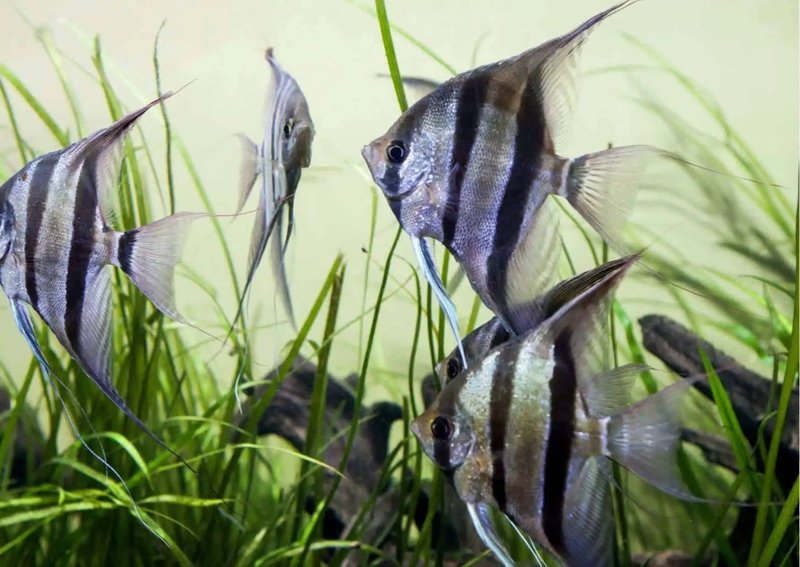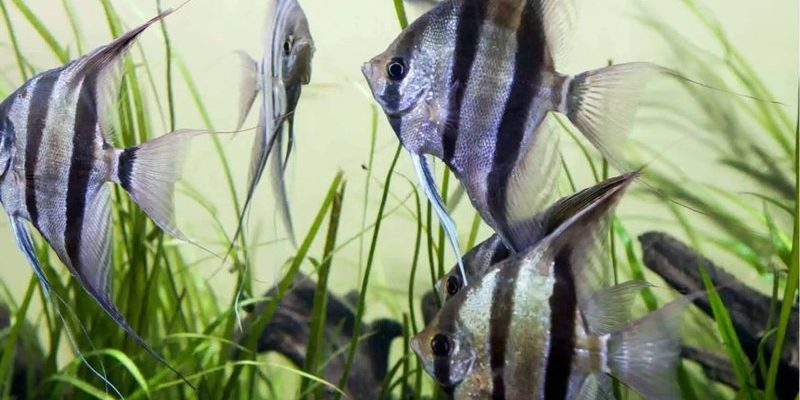
Imagine having a little piece of that underwater world in your living room. Watching angelfish swim is not just a hobby; it’s a little escape to a vibrant, bustling reef. They add a splash of color and a dash of life to your tank. But understanding their behavior and temperament is key to ensuring they thrive and display their best qualities. Let’s dive into the world of marine angelfish and uncover what makes them tick.
What Are Marine Angelfish?
Marine angelfish belong to the family Pomacanthidae, and there are many species, each with unique colors and patterns. The most popular include the Emperor Angelfish, Blueface Angelfish, and African Masked Angelfish. These fish are known for their bright hues, intricate markings, and somewhat territorial nature.
In the wild, marine angelfish can be found in warm, tropical waters, often around coral reefs. They play a crucial role in their ecosystem, feeding on algae and small invertebrates. Their diets in captivity can vary based on species, but it usually consists of algae, sponges, and specially formulated pellets.
You might be surprised to know that angelfish can live quite long—often over a decade in a well-maintained aquarium. This longevity makes it essential to understand their behavior and temperament, especially if you’re considering adding one to your home.
Behavior Patterns of Marine Angelfish
Marine angelfish are known for their curious and sometimes playful behavior. They tend to explore their surroundings, darting in and out of hiding spots. This natural curiosity can be delightful to observe. You might catch them peeking around rocks or investigating new additions to their tank.
In their interactions with other fish, angelfish can exhibit a mix of friendliness and aggression. They can be somewhat territorial, especially when they feel their space is invaded. If you’re introducing new fish into a tank with an established angelfish, be prepared for a bit of posturing. Expect some chasing or flaring of fins to establish dominance.
Here’s the thing: if you’re planning to keep multiple fish in the same tank, it’s best to choose tank mates wisely. Smaller, less aggressive species tend to coexist better with angelfish than more assertive fish. Some ideal companions include clownfish, gobies, and cardinalfish.
Understanding Their Temperament
Temperament is a huge part of what makes marine angelfish so interesting. While they can be aggressive, especially during breeding season or when they’re feeling threatened, many angelfish can also display playful and social behaviors.
Angelfish often engage in courtship displays, which can be quite a spectacle. During mating, you might see them swimming side by side, darting back and forth, and even nipping at each other lightly. This is a natural part of their behavior that signifies pairing and bonding.
However, you might be wondering how to manage an angelfish’s temperament in a home aquarium. Providing plenty of hiding spots with rocks, coral, or decorations can help minimize stress and aggression. Giving them space reduces territorial disputes, so every fish can find its nook.
Feeding Habits and Social Interactions
Feeding is an essential aspect of behavior for marine angelfish. They’re primarily herbivorous, meaning they love to munch on algae and plant matter. In captivity, it’s crucial to offer a balanced diet that mimics their natural food sources. You can provide a mix of seaweed snacks, specially formulated angelfish pellets, and occasional frozen foods like shrimp or squid.
When it comes to social interactions, angelfish tend to be curious about their human caretakers. They may swim up to the glass when they see you approaching, thinking it’s feeding time. However, it’s essential to avoid overfeeding, as this can lead to health issues. A good rule of thumb is to feed small amounts twice a day, ensuring they eat everything within a few minutes.
Here’s a tip: using a feeding stick for seaweed can help keep their area cleaner and allow all fish in the tank to enjoy their meal.
Tank Requirements for Marine Angelfish
Setting up the right environment is critical for the health and happiness of your marine angelfish. They thrive in a well-maintained reef aquarium, ideally with a minum of 50 gallons of water. This size allows them enough space to swim freely and establish territories.
Water Quality is fundamental. Aim for stable salinity, temperature, and pH levels. Regular water changes—at least 15-20% every two weeks—will help keep the tank environment healthy. Marine angelfish prefer a temperature range of about 75 to 82 degrees Fahrenheit, with a pH of 8.1 to 8.4.
You’ll also want to include plenty of rock formations or coral. They enjoy having places to hide, so a well-structured environment not only provides shelter but also mimics their natural habitat.
Common Issues and Troubleshooting
Even with the best care, you may encounter some challenges with your angelfish. One common issue is aggression, especially if new fish are introduced. If you notice your angelfish becoming overly territorial, consider rearranging the tank’s layout. This tactic can disrupt established territories and help ease tensions among the fish.
Another concern might be health problems such as ich (a common parasite). Symptoms of ich include white spots on the fish’s body and fins. If you notice this, separate the affected fish into a quarantine tank and treat with appropriate medications.
Keeping an eye on water quality is vital, too. If your angelfish is behaving unusually or appears stressed, it could be a sign of poor water conditions. Regular testing of the water can help catch issues before they escalate.
Final Thoughts
The marine angelfish is a stunning addition to any aquarium, with a personality as vibrant as its colors. Understanding their behavior and temperament allows you to create a peaceful and thriving environment, letting you enjoy the mesmerizing world of these beautiful fish.
From their curious exploration to their playful interactions and occasional quirks, marine angelfish remind us of the wonder of underwater life. By providing proper care, a suitable habitat, and a balanced diet, you can watch them flourish. So, whether you’re a seasoned aquarist or just starting your journey, the marine angelfish might just be the perfect splash of color and character for your tank.

